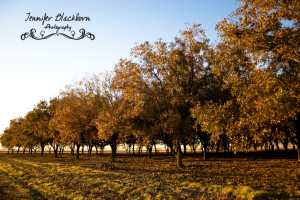**This article is not a substitute for the advice of an attorney.**
This week brought forth several major Texas court decisions that are related to agriculture. Here are brief (at least in lawyer terms) summaries of those cases.
1. On Wednesday, the San Antonio Court of Appeals issued its decision in Edwards Aquifer Authority v. Bragg.
The Braggs own property that sits above the Edwards Aquifer on which they have two pecan orchards: The Home Place orchard and the D’Hanis orchard. Beginning in the late 1970’s, the Braggs irrigated the Home Place orchard from a well drawing from the Edwards Aquifer. The D’Hanis Orchard was irrigated through other means. In 1993, the Legislature passed the Edwards Aquifer Act (“the Act”) that created the Edwards Aquifer Authority (“EAA”). The Act charged the EAA with permitting and regulation groundwater withdrawals in the area where the Bragg orchards are located. The Act creating the EAA requires that the EAA create a permitting system for groundwater use that gives preference to historic and existing users. Generally, the Act allows a historic user to withdraw the maximum amount of water that was previously put to beneficial use during any one-year period.
The Braggs applied for water permits for both of their orchards. The EAA denied the permit for the D’Hanis orchard because there was no evidence of historical use of water, and granted a permit of only 120 acre feet/year for the Home Place orchard (about half of the amount sought by their permit application) based on historic water use. The Braggs filed a takings claim. The trial court found that the permit denials constituted regulatory takings for both orchards, and awarded damages of $134,918.40 for the D’Hanis orchard and $597,575.00 for the Home Place orchard. Both parties appealed to the San Antonio Court of Appeals.
In its 50 page opinion, the Court of Appeals addressed several issues. [Read opinion here.]
First, the EAA argued that because the permitting system that the Braggs complained of in the Act was created by Legislature, the Braggs should have sued the State of Texas, rather than the EAA. The court rejected this argument, finding that while the State of Texas may also have been a proper party, the EAA was a proper defendant as well since it was a state agency enforcing the Act.
Second, the court held that a claim for a regulatory taking results in inverse condemnation (a claim like the one here filed by the Braggs alleging that the regulations constituted a taking without just compensation) is governed by a 10-year statute of limitations. In this case, where the Braggs brought an as-applied challenge to the denials of the permit, the statute of limitations began running in 2004 and 2005 when the permit applications were acted upon by the board, rather than when the Act was passed in 1993. Thus, the Braggs’ claim was timely filed.
Third, the court found that the denial of the D’Hanis permit and limitation of the Home Place permit constituted regulatory takings. The court applied the Penn Central factors (set forth by the United States Supreme Court Penn Central case) and found that the economic impact of the denial/limitation of the permits and the investment-backed expectations of the Braggs both weighed in favor of finding that a taking occurred. On the other hand, the nature of the regulation weighed in favor of the EAA given the need for water planning and conservation. The court also considered “other factors” including the fact that pecan farming requires the use of water and that given the ongoing drought in Texas, irrigation was the only real option for the Braggs. In light of these factors, the court found that a regulatory taking occurred when the permits were denied and limited.
Next, the court turned to the issue of adequate compensation. Under both the Texas and federal constitutions, private property may not be taken for a public use without adequate compensation being made to the private property owner. The court made two rulings that address the issue of adequate compensation.
First, the court found that the value of the property for adequate compensation purposes in an inverse condemnation suit should be its value at the time of the taking. This differs from the rule for a condemnation proceeding filed by the State, for which the property is valued at the time of the condemnation hearing. Thus, the Braggs’ property should be valued from the time of the regulatory taking, which occurred when the permits were denied/limited.
Second, the court determined how adequate compensation should be calculated. The trial court calculated compensation differently for each of the orchards. For the Home Place, the trial court calculated compensation by looking at the water limitation imposed. The trial court reasoned that because the Braggs requested 228.85 acre feet, but were granted a permit for only 120.2, the measure of compensation should be the number of acre feet of water withheld (228.85 minus 120.2) multiplied by a market value for water ($5,500/AF). For the D’Hanis Orchard, however, the court looked at the impact on the value of the land, comparing the market value per acre of land with no water rights and the value per acre of land with water rights and awarding the difference as just compensation. The Court of Appeals held that because the highest and best use of the property was for pecan orchards, the proper valuation method in this case was to compare the value of the pecan orchards before and after the permit denial/limitation. Thus, the court remanded the case back to the trial court to calculate the applicable damages by comparing the value of the orchards before and after the permit denial/limitation and to award the difference in value to the Braggs.
Please note that I claimed these summaries would be brief in lawyer terms only.
2. Texarkana Court of Appeals affirmed Crawford Family Farm Partnership v. TransCanada Keystone Pipeline.
On Tuesday, the Texarkana Court of Appeals upheld the trial court’s decision that TransCanada is a common carrier and may use the power of eminent domain to obtain land to build the Keystone XL Pipeline. Julia Trigg-Crawford challenged TransCanada’s use of eminent domain to obtain land for the Keystone XL pipeline, which will transport gas from Canada to the Gulf Coast. TransCanada filed a condemnation petition to obtain an easement across Crawford’s farmland in order to place the underground 36” diameter pipeline. Crawford argued that the statute granting eminent domain power to common carrier pipelines applies only to intrastate lines, and not to lines crossing state boundaries. The lower court sided with TransCanada. The Court of Appeals agreed and specifically found that TransCanada is a common carrier and, therefore, has eminent domain power under Texas law. The court also expressly found that land condemned for the Keystone XL Pipeline is taken for a “public use” as required for condemnation to occur. Trigg-Crawford issued a statement that she intends to appeal the ruling. [Read opinion here.]
Also important in this opinion is the fact that the Court of Appeals applied the Denbury test to determine common carrier status. In the March 2012 Denbury decision, the Texas Supreme Court found that a CO2 pipeline company claiming common carrier status was required to “demonstrate a reasonable probability that third-party customers will use the pipeline.” This created a higher legal standard for a pipeline to meet in order to condemn property. In a footnote, however, the Denbury opinion, limited the test to the one at issue in the case, which carried CO2. Courts have since struggled to determine whether this test should apply to crude pipelines, and various opinions have taken differing views. The Crawford opinion makes the Sixth Circuit’s position clear–that the Denbury test is not limited only to CO2 pipelines and should be applied to crude oil pipelines as well.
3. The Texas Supreme Court decided TCEQ v. City of Waco.
The Supreme Court ruled that the Texas Commission on Environmental Quality did not abuse its discretion in granting a water quality permit to a dairy without granting the City of Waco’s request for a contested hearing on the issue. The Court found that the amendment sought by the dairy–to increase the number of cows from 690 to 999 and to increase the waste-application acreage from 261 to 285–did not constitute a “significant increase” or “material change” to the authorized discharge of waste that would require a contested hearing. In light of t his, the TCEQ was not required to hold the contested hearing as was requested by the City of Waco.
Despite what I read in some other articles, the Court did not decide whether the City of Waco qualified as an “affected party” who could request a contested hearing. The Court simply did not have to make that decision in this case because contested hearing was necessary—whether Waco was an affected party or not—because the amended permit sought did not require a contested hearing to be held. Thus, even an affected party would not have been entitled to a hearing on the permit. [Read opinion here.]
4. Austin Court of Appeals upholds transmission line route.
In Malone v. Public Utility Commission of Texas, the AustinCourt of Appeals upheld the PUC’s selection of a route for placing transmission lines. After a contested case hearing, the PUC selected one of thirteen possible routes for transmission lines to be built by Electric Transmission Texas, LLC. Mr. Malone filed suit claiming that the PUC’s routing selection was improper.
Electric Transmission Texas, LLC was selected by the PUC to build a transmission line across north central Texas, known as the Riley-to-Edith Clark line. As required by law, ETT filed several proposed routing options for the transmission lines with the PUC. After the potential routes were filed, several landowners, including Mr. Malone, intervened in the process and became parties to the contested hearing before the State Office of Administrative Hearings. The SOAH administrative law judges recommended that the PUC select proposed route REC12, which did not cross Mr. Malone’s property. The PUC, however, did not select REC12, but instead chose a modified version of REC1, in which the transmission lines cross Mr. Malone’s property. Mr. Malone sought judicial review of the PUC’s decision and the district court agreed with the PUC. Mr. Malone then appealed the decision.
The Court of Appeals agreed with the district court and upheld the PUC’s route selection. The court found that the PUC adequately explained their reasoning for selecting a route other than the one suggested by the administrative law judges. Additionally, the court found that while the PUC must consider the impact on affected landowners when selecting a route, it is not required to adopt a route that would not impact any landowner. Because the PUC considered impacts of proposed routes on landowners, as well as considering numerous other factors including cost, environmental integrity, paralleling of existing lines, it did not err in selecting the route. [Read opinion here.]













